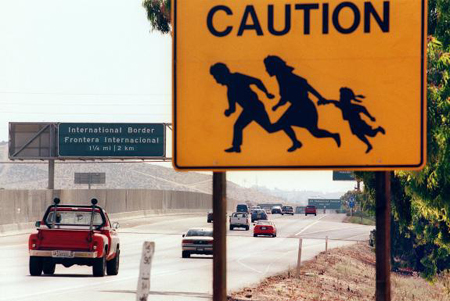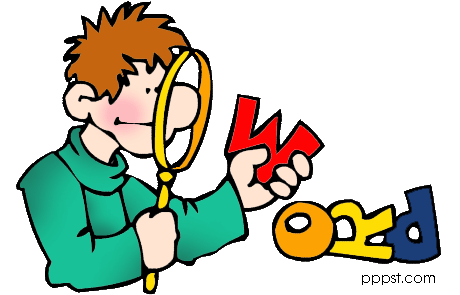My department works very hard to
compile a varied selection of course readings—diverse in both subject matter
and reading level. One of the objectives
for my 10th grade American literature course will be to think
critically about the way that American literature has expanded and now includes
voices that may not have been considered American in years past. Therefore, I am developing a unit called
“Rethinking Borders” in which students will read various short fiction and
poetry from writers who have immigrated to the United States. The texts I have selected will serve as focal
points to help students (I hope) call into question the portrayal of
undocumented workers and their families and provide the human experience side
to these stories that is rarely seen through news media outlets.
Students
from all levels can benefit from these texts in several ways. While readability estimates suggest that each
of these books is written below the 10th grade level, two out of the
three would require instructional support because of the content—not the
language. Each book is written in a
different style: semi-autobiographical, first person narrated fiction
(Jimenez), creative nonfiction (Urrea), and a journalistic, news magazine style
(Martinez). These different writing
approaches all develop the different points of view on the narrative of
undocumented border crossers. The two
websites offered present several photographs that will engage students at the
visual level. With the varied reading
levels, students will be able to read material on their own and with my
instructional support. This way, all
students can have something to offer to discussions and will never feel that
they could not understand any of the texts assigned for class.
Jimenez, Francisco. (1997). The Circuit: Stories from the Life of a Migrant Child. Albuquerque, NM: University of New Mexico
Press.
Readability
Estimate: 5.0. This collection of semi-autobiographical stories is told from
the perspective of Francisco—a young boy who narrates the life of a migrant
working family as it travels along the California farm circuit. Through Francisco’s voice, we get a glimpse
of the hope and dedication that drives migrant families to move constantly from
place to place—living a life devoid of any permanence other than what one gets
from being a member of a large but close-knit family. Because these stories can stand alone, I
would most likely select a few of them for students to read, so that students
get a wider scope of the experience. The
stories are simple to read, brief, and focused, so I would make a point to
select a combination of stories that discuss various aspects of the migrant
worker experience: the educational/language acquisition experience, the daily
life and labor experience, and the nervousness surrounding the possibility of
being discovered by Border Patrol officers.
In teaching these
stories, I would instruct students to track the instances and feelings that are
unique to the narrator’s experience and those that are universal coming-of-age
experiences. I would guide students
through one story, discussing specific events in the story and having the
students discuss what categories they believe the events fall in to. Ultimately, students would have to use the
events as textual support in order to compose an argument that clearly presents
their decisions regarding what are universal experiences and what are unique. This type of assignment will require students
to think critically about what they can take from reading about experiences
that might appear to be entirely different from their own.
Urrea, Luis Alberto. (2004). The Devil’s Highway: A True Story. New York, NY: Back Bay Books.
Readability
Estimate: 5.8. In this book, Urrea has
gone to great lengths to investigate the hopes and motivations of the men who
became known as the Wellton 26—a group of undocumented workers who hoped to be
led into the United States for work, but were instead abandoned in the desert
by their guide. Urrea tells a balanced
story in which he vilifies no one and exalts no one. The biggest villain in this book is the
unforgiving and indiscriminate desert heat, and even still, the heat is
described with an unbiased honesty. The
strength of this book is that after the first 10-15 pages, it is easy to forget
that there are any questions surrounding the legality of crossing the United
States/Mexico border—that even though we know from the beginning that only
twelve of the 26 men survived the journey—we still keep reading through this
fatal journey.
Even though this
book has an estimated readability of
about 6th grade, it is a study in tone and subtle rhetoric,
and that’s the approach I would take with teaching this book. While Urrea does not present overtly negative
views of the coyote who abandoned the men, the Border Patrol agents, or the
Wellton 26 themselves, his tone reveals a lot about what he hopes we can take
away from reading this book. Because the
book avoids overt judgments, it is a great text to use to encourage students to
think about the journeys that many of these hopeful travellers take in search
of opportunity. Once again, I would
encourage students to write their way through their thinking by using reading
notes and journaling that both responds to the texts and poses new questions.
Marentes, Carlos and Marentes, Cynthia. (1999). Los Braceros. Retrieved
from http://www.farmworkers.org/benglish.html
This website
addresses specific details about los
braceros and a bit of history about the origins and extent of this guest
worker program. Many students are
unaware of this program that invited Mexican farmworkers into the United States
to compensate for the manual labor shortage as a result of World War II. While the images on this site are not
extensive, the historical information is clearly presented and easy to
understand. Most interesting here is the
section on “The Short Handle Hoe,” a tool that dehumanized laborers by forcing
them to remain in a stooped position with their heads facing the ground. This tool was eventually made illegal. A major reason for using these materials is
the focus on inciting critical thinking.
A great place to start the students thinking is with the term “bracero”
(strong arm) and how it compares to the terms we hear now, i.e “illegal” and
“alien”.
Martinez, Ruben. (2002). Crossing Over: A Mexican Family on the Migrant Trail. New York, NY: Picador.
Readability
Estimate: 9. Like Urrea, Martinez’s book seeks to tell an honest story of a
family’s travels out of Mexico and through several states in search of work and
opportunity. The narrative follows the
Chavez family and the obstacles they encounter along the way. Rather than present a story about how
migrants might become invisible people who have simply “melted” into the United
States melting pot, Martinez makes a point to argue that the Chavezes and
families like them are actually developing a border culture that changes the cultural
landscapes of both the United States and Mexico.
This book is very
long, so I would not assign this entire book for student reading. I would select excerpts that pair nicely with
the Urrea and Jimenez books. Also, the
readability estimate suggests that this book is on a 9th grade
level; however, some selections use language that is not appropriate for a high
school setting which further requires me to use excerpts. Upon further searching, I see that this book
is most often used in higher education courses because there are some sections
that are written in more complex structure and language. I would provide a selection for students to
cite from for the major unit writing assignment. Before writing their papers, I would guide
students through the excerpt to ensure vocabulary understanding and to teach
them how to outline main ideas in a text that, at times, has a more complicated
structure.
National Museum of American History, Smithsonian Institution. (n.d.)
America on the Move. Retrieved
from http://americanhistory.si.edu/onthemove/themes/story_51_5.html
This website is a
great complement to this unit, as the primary focus is on the images that
present an honest and accurate depiction of the bracero experience. Because so many of our students are visual
people, viewing images that correspond to their readings helps them develop an
accurate mental picture of working and living conditions of migrant workers. Once students have a visual image that informs
their reading, they can develop more informed arguments and responses to what
we read and discuss.






